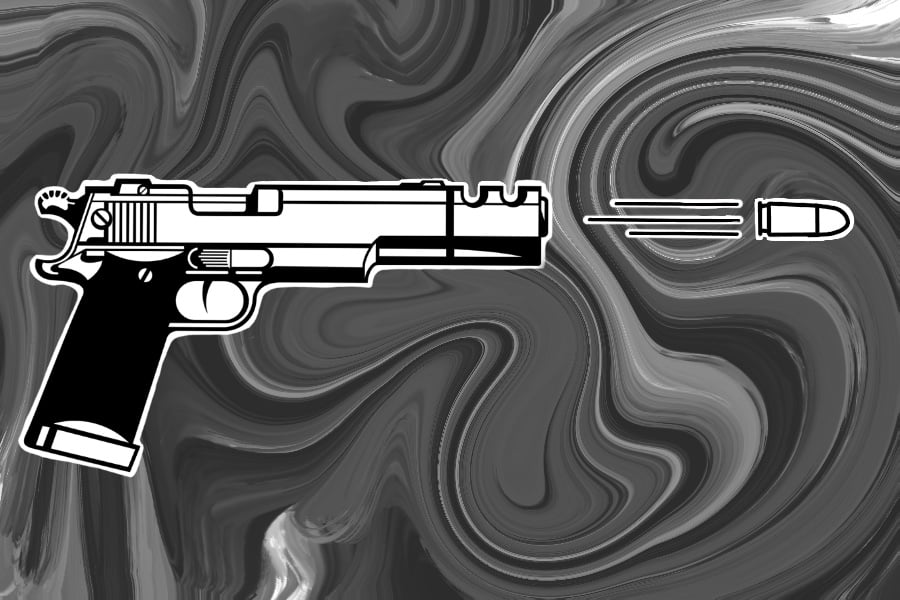Research on safe firearm storage suggests inequities based on gender and race
Daily file illustration by Emma Ruck
The researchers also hypothesized that systemic racism might prevent equitable distribution of S.A.F.E. Firearm to families, but only found “signals” of inequity that warrant future research, according to lead author Katelin Hoskins.
February 9, 2023
A team including Northwestern researchers found in a recent study that the Suicide and Accident prevention through Family Education Firearm program might not be an equitably provided option for all parents.
S.A.F.E. Firearm promotes conversations with parents during routine pediatric checkups on how to keep firearms out of kids’ hands during them. The program also voluntarily distributes free cable locks to parents.
Katelin Hoskins, a University of Pennsylvania professor and lead author of the study, spearheaded an analysis that illuminated potential inequities in the implementation of the S.A.F.E. Firearm program.
“I think really focusing on health equity has been something that’s been important to this project and to the team,” Hoskins said. “(It’s) something that we’ll be able to explore more when the trials complete.”
In the pilot study, the researchers hypothesized that clinicians who saw medically complex patients with chronic or pre-existing illnesses might be more likely to run out of time or forget to deliver the S.A.F.E. Firearm program. But, the researchers did not find significant evidence to suggest medical complexity was a factor contributing to the inequities.
The researchers also hypothesized that systemic racism might prevent equitable distribution of the S.A.F.E. Firearm program to families, but only found “signals” of inequity that warrant future research, according to Hoskins.
According to a journal entry in Preventive Medicine, Hoskins and her team identified that parents of non-Hispanic white youth are more likely to be reached by the S.A.F.E. Firearm program. They also found that clinicians may be more likely to administer the S.A.F.E. Firearm program for parents of males rather than females, according to Hoskins.
However, Hoskins does not believe they had enough information to draw from because the pre-trial analysis solely relied on data from the pilot clinics at the Henry Ford Health in Michigan and Kaiser Permanente in Colorado.
“I’d have to interpret that with caution … given the small sample (of 694),” she said.
Conversations on safe firearm storage are increasing following a school shooting in Newport News, Virginia in January in which a six-year-old student used a firearm from his home to shoot a teacher.
Weinberg junior Mirabella Johnson, co-founder of NU’s Students Demand Action chapter, said that after the shooting, her organization has been trying to raise awareness on safe gun storage.
“At the end of the day, we see this as a public health issue, and public health issues affect everyone,” Johnson said. “Even if you’re not a direct survivor of gun violence, you probably know someone in some way that has been influenced or hurt by (it).”
Christina Johnson, Director of Research Operations for the Beidas Team at the Feinberg School of Medicine, said safe storage is a non-controversial method to limit unauthorized access to firearms.
She said the S.A.F.E. Firearm’s strategy is to be non-political.
“The S.A.F.E. Firearm is informed by a harm reduction approach, which is all about understanding where someone is at and helping them get to somewhere safer,” Johnson said.
Johnson added that the study recommends practice facilitation — providing personalized help in adopting S.A.F.E. Firearm — to more thoroughly investigate the roots of potentially inequitable implementation.
Hoskins said practice facilitation represents possibilities for change by focusing more on barriers to implementation.
“We’re seeing equity as a focus in terms of how we design our implementation strategies, how we look at our implementation outcomes, like adoption, acceptability, feasibility (and) reach,” she said.
Correction: A previous version of this story misstated details about S.A.F.E. Firearm, Hoskins’ role at the University of Pennsylvania, Johnson’s role at the Feinberg School of Medicine and other information relating to the study and programs Hoskins referred to. The Daily regrets the errors.
Clarification: This story has been updated to better reflect what Christina Johnson intended to say about limiting access to firearms.
Email: pauloaposconnor2026@u.northwestern.edu
Twitter: @stallthepaul
Related Stories:
– Students Demand Action honors Uvalde shooting victims, rallies for gun violence prevention
– Q&A: Lily Cohen of NU Students Demand Action discusses advocating for gun safety on Capitol Hill
– Evanston community plans gatherings to mourn, heal after gun violence



